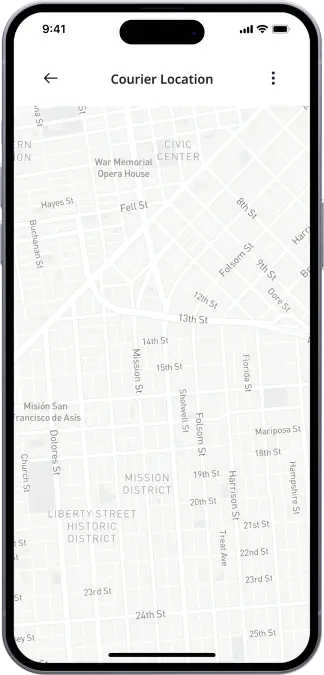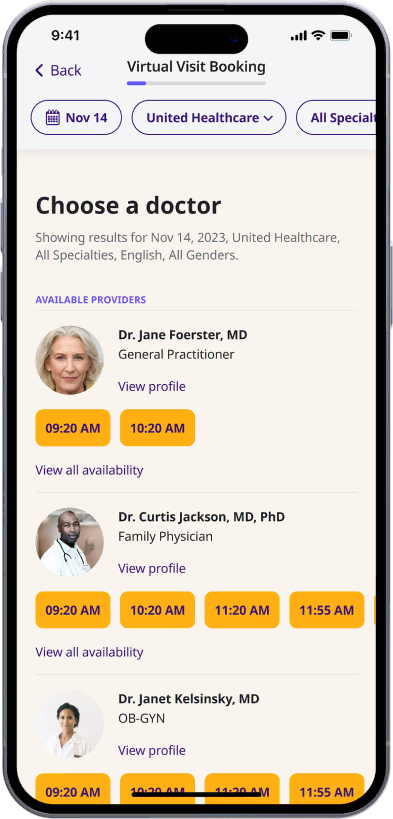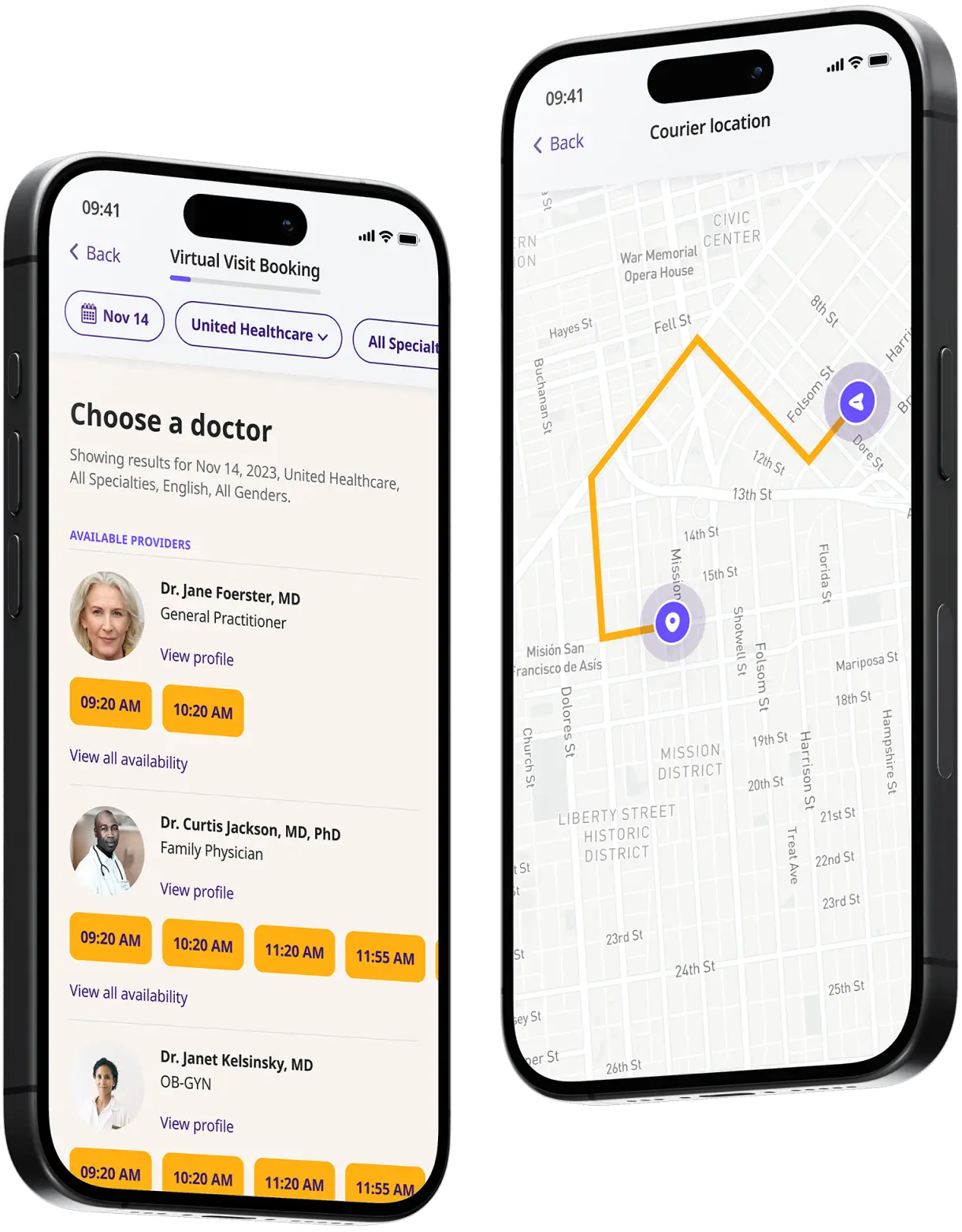Get a Pantoprazole Prescription Online
Get a new prescription for pantoprazole or refill your medication online.


Available in 50 states. Insurance accepted.
Fast
virtual visits
24/7 care
assistants
Prescriptions
as needed

24/7 Personal Care
Consult with a physician in 15 minutes, refill an Rx or chat with our care assistants.

Affordable & Convenient
See your cost upfront and get treatment for hundreds of different conditions.

Insurance Accepted
We accept most major insurance plans, making healthcare easy and affordable.
See If Delivery Is Available Near You
Delivery Not Available
Enter your ZIP code to check if prescription delivery is available in your area and how soon your meds could arrive.
How to get started
Choose your doctor, start a virtual visit, and have your prescriptions sent to your preferred pharmacy for pickup — all in just a few easy steps.
Choose a doctor
Choose a physician by availability, specialty, ratings, and more.

Start your video visit
Connect with a doctor in minutes on a secure video call.

Get your prescription
Pick up your meds or have them delivered in as little as an hour.

Available in 50 states. Insurance accepted.
One-Time
Physician Visit
One-time visit with a physician for diagnosis, treatment, Rx, labs, referrals, and doctor’s notes.
Accepted Insurances
See why people turn to DrHouse...
As seen in

Pantoprazole (Generic Protonix)
What Is Pantoprazole?
Pantoprazole is a proton pump inhibitor (PPI) that directly tackles problems with excessive stomach acid. This can include a range of conditions such as GERD or Zollinger-Ellison syndrome.
You will find this medication under the brand name Protonix, and it is available in three main forms:
- Oral tablets
- Oral liquid
- IV
How Does Pantoprazole Work?
Protonix – or Pantoprazole – works by decreasing the levels of acid in your stomach. As a member of the PPI family, it does this by inhibiting the cells in your stomach that pump acid into it.
This leads to lower levels of stomach acid which can prevent a whole assortment of symptoms such as heartburn, difficulty swallowing, and more.
What Is Pantoprazole Used For?
Pantoprazole is widely used to treat the symptoms of GERD. This condition happens when excess stomach acid flows back into the esophagus and causes irritation. It can lead to the following symptoms:
- Heartburn
- Sore throat
- Swallowing issues
- Vomiting
- Regurgitation
- Abdominal and chest pain
- Persistent cough
Alongside this, Pantoprazole is used to treat Zollinger-Ellison syndrome. This is a rare digestive disorder that affects the small intestine and leads to excess stomach acid production.
What Are The Side Effects Of Pantoprazole?
The side effects of Pantoprazole vary from mild to severe. Here are some of the mild and most common side effects you may experience:
- Stomach pain
- Diarrhea
- Mild dizziness
- Headaches
- Joint pain
- Nausea
- Bloating
- Constipation or diarrhea
Individuals who report these side effects usually state that they go away within a few days or weeks. They aren’t a major cause for concern, but if they persist for numerous weeks or start to get worse, you should speak to a medical professional and stop taking Pantoprazole.
As well as the mild side effects there are some severe ones you should keep an eye out for:
- Broken bones
- Stomach polyps
- Allergic reactions
- Severe diarrhea
- Lups
- Magnesium deficiency
- Vitamin B12 deficiency
- Kidney pain
When any of these signs are present, you should immediately stop taking Pantoprazole and seek medical assistance.
How Do You Take Pantoprazole?
Pantoprazole comes in various forms but it is commonly prescribed as an oral tablet. Your doctor will decide on the strength of the tablet based on your symptoms and needs. This also determines your daily dose, but all of this will be outlined when you obtain your prescription.
We strongly advise reading the information sheet that comes with your Pantoprazole tablets as this also contains extra info on dosages and what medications may interact with this drug.
The general guidelines for taking Protonix are to swallow the tablets whole, with or without food. Keep taking your dose as prescribed by your doctor unless you see any negative side effects. If your symptoms don’t change and you’re still experiencing issues with high levels of stomach acid, it’s a good idea to consult your doctor and they may prescribe a higher dose.
Frequently Asked Questions About Pantoprazole
What Are the Most Common Side Effects of Pantoprazole?
The most common side effects of Pantoprazole are headaches, stomach pain, nausea, diarrhea, and joint pain.
What to Avoid While Taking Pantoprazole?
While taking Pantoprazole, you should avoid the following:
- Alcohol – Drinking alcohol can worsen stomach issues and interact with pantoprazole.
- Excessive caffeine – Caffeine can irritate the stomach lining.
- Some foods – High-fat foods, acidic foods and spicy foods should be avoided as all of them can exacerbate symptoms of GERD.
- Smoking – Smoking can reduce the effectiveness of pantoprazole by stimulating acid production, making symptoms worse.
- Other medication – You should avoid medication like other acid reducers, blood thinners, and some antifungal medication.
The list above is in no way exhaustive, so make sure to always consult your doctor before taking any substances while taking pantoprazole.
How Long Does It Take for Pantoprazole to Work?
Pantoprazole starts to reduce stomach acid within a few hours, but you should start to notice a real difference within 2 to 3 days given you use it consistently and take the medication as prescribed. The full benefits might not be noticeable for several weeks.
What Is the Typical Dosage for Pantoprazole?
The dosage will vary depending on the medical condition being treated and several other factors. But generally, for GERD the starting dosage is 40 mg once daily for up to 8 weeks.
Your doctor may decide that you need an alternate dosage depending on your specific situation. It’s important to follow the instructions provided by your doctor and never take more than what is prescribed.
Do You Need a Prescription for Pantoprazole?
Yes, you need a prescription from your doctor to get Pantoprazole.
For more detailed information about pantoprazole, you can refer to the following sources:
- Protonix prescription label, Food and Drug Administration (FDA).
- Pantoprazole, Drugs.com.
- Pantoprazole, MedlinePlus.
- Pantoprazole, U.S. National Library of Medicine.
The content on this page has been medically reviewed for accuracy and comprehensiveness by Amy Dougherty, FNP-BC, AGAC
Frequently asked questions




